What's New
Displaying results 1201 - 1210 of 4907
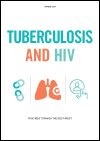
Resource | Fact Sheets,
Tuberculosis (TB) is the top infectious killer worldwide, claiming around 4400 lives a day. TB also remains the leading cause of death among people living with HIV, causing one in three AIDS-related deaths. In 2017, 1.6 million people died from TB, including around 300,000 people living with HIV. However, TB is also preventable and curable.
The latest estimates from the World Health Organization (WHO) show that progress has been made towards the target. Global TB deaths among people living with HIV have fallen by 42% since 2010, from 520,000 down to 300,000 in 2017. However, the estimates also indicate that progress remains uneven and further efforts are needed to address the main challenges, including the need for equity and ensuring that vulnerable groups have access to integrated HIV and TB services.
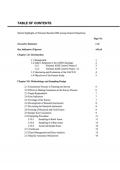
Resource | Publications,
BSS in the general population and high-risk groups is proposed to be undertaken thrice during the period 2001 – 2005. To provide an independent evaluation of NACP-II activities, an external agency was contracted for BSS.
The present report details the observations of the national baseline BSS survey among the general population, which was conducted in all 32 States and Union Territories of the country. This baseline provides basic information needed to strategize and prioritize programs under NACP-II during its five years of implementation.
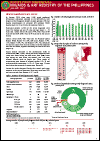
Resource | Fact Sheets,
In January 2019, there were 1,249 newly confirmed HIV-positive individuals reported to the HIV/AIDS & ART Registry of the Philippines (HARP). Sixteen percent (196) had clinical manifestations of advanced HIV infection (WHO clinical stage 3 or 4) at the time of diagnosis.
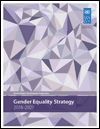
Resource | Publications,
The UNDP Gender Equality Strategy 2018-2021, the third such strategy, provides a road map to elevate and integrate gender equality into all aspects of UNDP's work to reduce poverty, build resilience and achieve peace in communities and territories, helping to accelerate progress towards the 2030 Agenda.
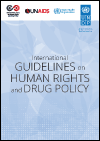
Resource | Guidelines,
Drug control intersects with much of the 2030 Agenda for Sustainable Development and the UN Member State pledge to leave no one behind. In line with the 2030 Agenda, the UNDP Strategic Plan 2018-2021 and the HIV, Health and Development Strategy 2016-2021: Connecting the Dots, the International Guidelines on Human Rights and Drug Policy provide a comprehensive set of international legal standards for placing human dignity and sustainable development at the centre of Member State responses to illicit drug economies. The guidelines cover a diverse set of substantive issues ranging from development to criminal justice to public health.
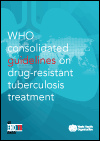
Resource | Guidelines,
The present Consolidated guidelines include a comprehensive set of WHO recommendations for the treatment and care of DR-TB, derived from these WHO guidelines documents. The consolidated guidelines include policy recommendations on treatment regimens for isoniazid-resistant TB (Hr-TB) and MDR/RR-TB, including longer and shorter regimens, culture monitoring of patients on treatment, the timing of antiretroviral therapy (ART) in MDR/RR-TB patients infected with the human immunodeficiency virus (HIV), use of surgery for patients receiving MDR-TB treatment, and optimal models of patient support and care.

Resource | Guidelines,
These guidelines have been developed to provide updated, evidence-informed recommendations on tuberculosis (TB) infection prevention and control (IPC) in the context of the global targets of the Sustainable Development Goals (SDGs) and the World Health Organization (WHO) End TB Strategy. The notion and practice of IPC encompasses a set of broader, practical, evidence-based approaches to preventing the community from being harmed by avoidable infections, preventing health care-associated infections (HAI), implementing laboratory biosafety and reducing the spread of antimicrobial resistance (AMR).
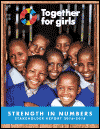
Resource | Publications,
In less than 10 years, the Together for Girls partnership has made monumental progress in achieving a safer world for every child, adolescent and young person. Read about the results and priorities.
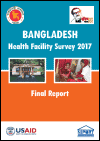
Resource | Publications,
The survey showed that nearly all health facilities in Bangladesh offer antenatal care for women and curative care for children. A majority of the facilities provide family planning and child vaccination services. Less common services are for non-communicable disease and tuberculosis diagnosis or treatment and normal delivery. The availability of normal delivery services has increased across all types of health facilities with the most notable change among Union Health and Family Welfare Centers (UHFWCs).
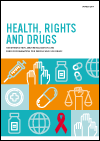
Resource | Publications,
The new UNAIDS report, Health, rights and drugs: harm reduction, decriminalization and zero discrimination for people who use drugs, shows that of the 10.6 million people who inject drugs in 2016, more than half were living with hepatitis C and one in eight were living with HIV. It outlines that ensuring that comprehensive harm reduction services are available—including needle–syringe programmes, drug dependence treatment and HIV testing and treatment—will kick-start progress on stopping new HIV infections among people who use drugs.





